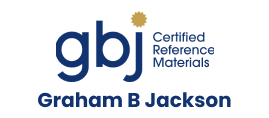Certified reference materials (CRMs) are essential for maintaining consistency and traceability in analytical labs, ensuring that measurements and calibrations meet international standards. This blog will focus on a Zirconium (Zr) solution with a concentration of 10 mg/L, prepared in a matrix of 2% nitric acid (HNO₃) and 0.5% hydrofluoric acid (HF). Produced to high standards, this CRM ensures accuracy and reliability in laboratory analysis, from instrument calibration to method validation.
Grade: ARISTAR®
Storage Conditions: Ambient Temperature
Certification and Traceability
This Zirconium solution CRM is designed to provide traceable, accurate standards to support high-precision analytical work. Produced from high-purity raw materials, including 18 MΩ deionized water and acids derived through sub-boiling processes, it reflects the rigorous standards needed in certified reference materials.
The certification adheres to ISO standards, with an expanded uncertainty measurement expressed as the standard uncertainty multiplied by a coverage factor (k = 2). This factor, under a normal distribution, corresponds to a 95% coverage probability. Uncertainty evaluation follows the guidelines established in EA 4/02, ensuring reliable and reproducible results.
Metrological Traceability:
Calibration is performed using Inductively Coupled Plasma Mass Spectrometry (ICP-MS), with calibration curves based on standard solutions traceable to internationally recognized sources like NIST (National Institute of Standards and Technology) or BAM (Bundesanstalt für Materialforschung und -prüfung). Every step in the certification process contributes to an unbroken chain of comparisons, creating a direct line of traceability to the International System of Units (SI).
Laboratory Procedures and Quality Control
The CRM solution’s quality is upheld by a strict quality management system, conforming to multiple ISO standards:
- ISO 9001 for Quality Management Systems
- ISO/IEC 17025 for laboratory testing competence
- ISO 17034 for Reference Material Production
Laboratory Equipment Standards:
All glassware and equipment are Class A and regularly calibrated. Analytical balances undergo yearly calibration under in-house protocols and daily verification checks. Temperature-sensitive measurements rely on thermometers certified by ISO 17025-accredited labs, and ambient conditions are monitored with calibrated hygrometers to uphold consistency.
Intended Applications
This Zirconium solution CRM is specifically designed for laboratory use, offering a versatile tool for:
- ICP-MS and ICP-OES Calibration: Used as a calibration standard for Inductively Coupled Plasma-Mass Spectrometry (ICP-MS) and Inductively Coupled Plasma Optical Emission Spectrometry (ICP-OES).
- Method Validation: Essential in validating analytical methods for accurate elemental analysis.
- Preparation of Working Reference Samples: Provides a basis for preparing reference samples used in laboratory analysis.
- Detection Limit and Linearity Studies: Supports sensitivity studies and method linearity evaluations.
The CRM is robust for laboratory use, but it can also be diluted in a high-purity matrix if needed. When diluting, only Class A glassware should be used to ensure precision and prevent contamination.
Storage, Stability, and Safety Considerations
For optimal stability, this CRM should be stored in its original packaging with a tightly closed cap, maintained under ambient temperature as recommended. Stability is guaranteed within a margin of ±0.5% of the certified concentration, given it is properly stored and handled. Stability testing is conducted according to MQP 5.14.1, and any variances in expiration dates will be based on individual batch testing results.
Safety Precautions:
Due to the presence of HF, this solution requires careful handling. Standard laboratory safety protocols should be observed, including the use of appropriate personal protective equipment (PPE). For additional details, consult the safety data sheet provided with the CRM.
Homogeneity and Usage Guidelines
Homogeneity is guaranteed through an in-house mixing procedure, ensuring uniform composition across the solution. To preserve this homogeneity, users should thoroughly mix the solution by inversion before use. Pipetting directly from the container is discouraged to avoid contamination.
Conclusion
This high-purity Zirconium solution in a 2% HNO₃ and 0.5% HF matrix is an essential CRM for laboratories that require reliable, traceable standards for elemental analysis. Compliant with rigorous ISO standards, it provides an ideal reference for calibration, method validation, and other analytical applications, ensuring that measurements are accurate and consistent across labs. With its quality-controlled production and adherence to stringent certification protocols, this CRM stands as a critical tool in modern laboratory settings, supporting scientific accuracy and integrity.
Note: This CRM is for laboratory use only, and users should follow safety guidelines and storage recommendations to ensure accurate and safe handling.
